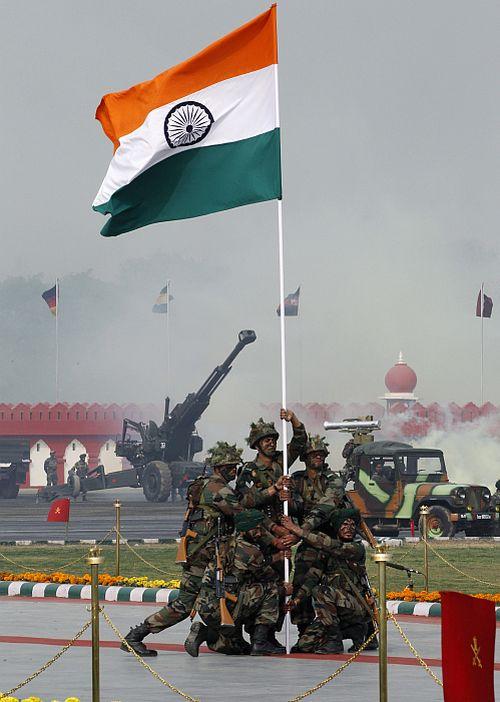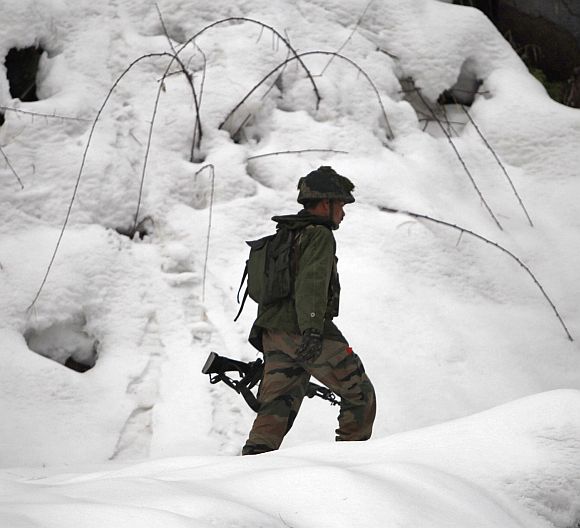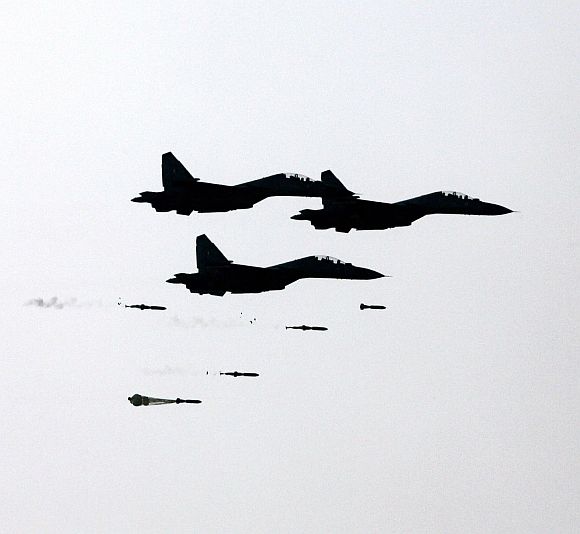
While the new Strike Corps is being raised, equipped and trained, the government must make vigorous efforts to speed up the completion of infrastructure projects. Otherwise, the army will have a new Strike Corps and not be able to launch it effectively, says Gurmeet Kanwal
After considerable delay, the Cabinet Committee on Security has finally approved the army’s proposal for raising a Strike Corps for the mountains.
This excellent move will help India to upgrade its military strategy against China from dissuasion to genuine deterrence as the Strike Corps, in conjunction with the Indian Air Force, will provide the capability to launch offensive operations across the Himalayas and take the next war into Chinese territory.
The new Strike Corps will comprise two infantry divisions and will be supported by independent armoured brigades, the requisite artillery firepower, engineer support and logistics services. It will cost Rs 64,000 crore to raise and equip over a period of seven years.
Approximately 90,000 new personnel will be added to the army’s manpower strength, including those in ancillary support and logistics units. In addition, the army has already raised 56 and 71 Mountain Divisions and deployed them in Arunachal Pradesh to fill existing gaps in the defences.
...

Some elements of these divisions will act as readily available reserves for the new Strike Corps to add weight along the axis of attack and exploit success.
These divisions will also be employed to secure launch pads for an offensive across the Himalayas. Hence, these must be seen as playing a significant supporting role for the Strike Corps.
Despite the ongoing border talks between India and China to resolve the territorial and boundary dispute, often punctuated by ugly incidents like the PLA incursion in the Daulat Beg Oldie sector in April 2013, a limited border conflict cannot be completely ruled out as the Line of Actual Control is yet to be demarcated jointly on the ground and the map.
As the territorial dispute with Pakistan over Jammu and Kashmir is also in the mountains, there is a very high probability that the next conventional conflict involving India will again break out in the mountains.
Since the war will be fought under a nuclear overhang, particularly with Pakistan, there is a fair possibility that it will remain confined to the mountains so that it does not escalate out of control to nuclear exchanges.
Hence, it was time for India to pivot to the mountains in its quest for building military capacities and it is creditable that the government has given the go ahead to raise a new Strike Corps.
In any future war that the armed forces are called upon to fight in the mountains, gaining, occupying and holding territory and evicting the enemy from Indian territory occupied by him will continue to remain important military aims. No war plan will succeed without achieving asymmetries in the application of firepower to destroy the enemy’s combat potential and infrastructure.
...

Army-IAF operational plans must be fully integrated. These must be jointly evolved, meticulously coordinated and flexible enough to be fine-tuned to exploit fleeting opportunities and to take advantage of the enemy’s reactions during execution.
This is especially so in the mountains where the military aims and objectives are limited in scope because of the terrain. Both the services must work together to create the capabilities that are necessary to take the battle into enemy territory during the next war in the mountains.
As artillery batteries and regiments cannot be moved and re-deployed easily, operations in the mountains place a premium on battlefield air support. Operational mastery over air-to-ground strikes can influence the outcome of tactical battles in the mountains extremely favourably.
Firepower ratios can be enhanced to levels necessary for achieving overwhelming superiority only through a major upgradation in the availability of offensive air support. The peculiarities of terrain and the lack of sufficient road communications, particularly laterals that connect the road axes leading to the border, place heavier demands on helicopter lift for the movement of reserves within divisional and brigade sectors.
The new Strike Corps will place heavy demands on helicopter support. At the operational level, only an “air assault” formation can turn the tide through vertical envelopment and enable deep offensive operations to be carried out when employed in conjunction with Special Forces.
...

An air assault brigade group inducted across the LoC or LAC by helicopters after the IAF has achieved a favourable air situation can seize an objective in depth.
Ideally, each of the infantry divisions of the Strike Corps must have one air assault brigade.
Air-transported operations can also play a major role in influencing operations. During Operation Parakram in 2001-02, almost a complete brigade group was airlifted to Kashmir Valley to enhance the reserves available in 15 Corps for offensive operations.
In addition to attack helicopters, which will provide sustained firepower support, a large number of utility helicopters will be required to support offensive operations across the Himalayas, including medium- and heavy-lift helicopters.
The successful launching of Strike Corps operations will depend on the availability of good infrastructure, including double-lane roads that are all-weather and suitably placed logistics nodes. India’s plans to upgrade the infrastructure in the states bordering China have not been progressing at an adequate pace.
While the new Strike Corps is being raised, equipped and trained, the government must make vigorous efforts to speed up the completion of infrastructure projects. Otherwise, the army will have a new Strike Corps and not be able to launch it effectively. It must also hasten the acquisition of medium artillery guns for the mountains, as also intelligence, surveillance and reconnaissance equipment.
Gurmeet Kanwal is a Delhi-based strategic analyst